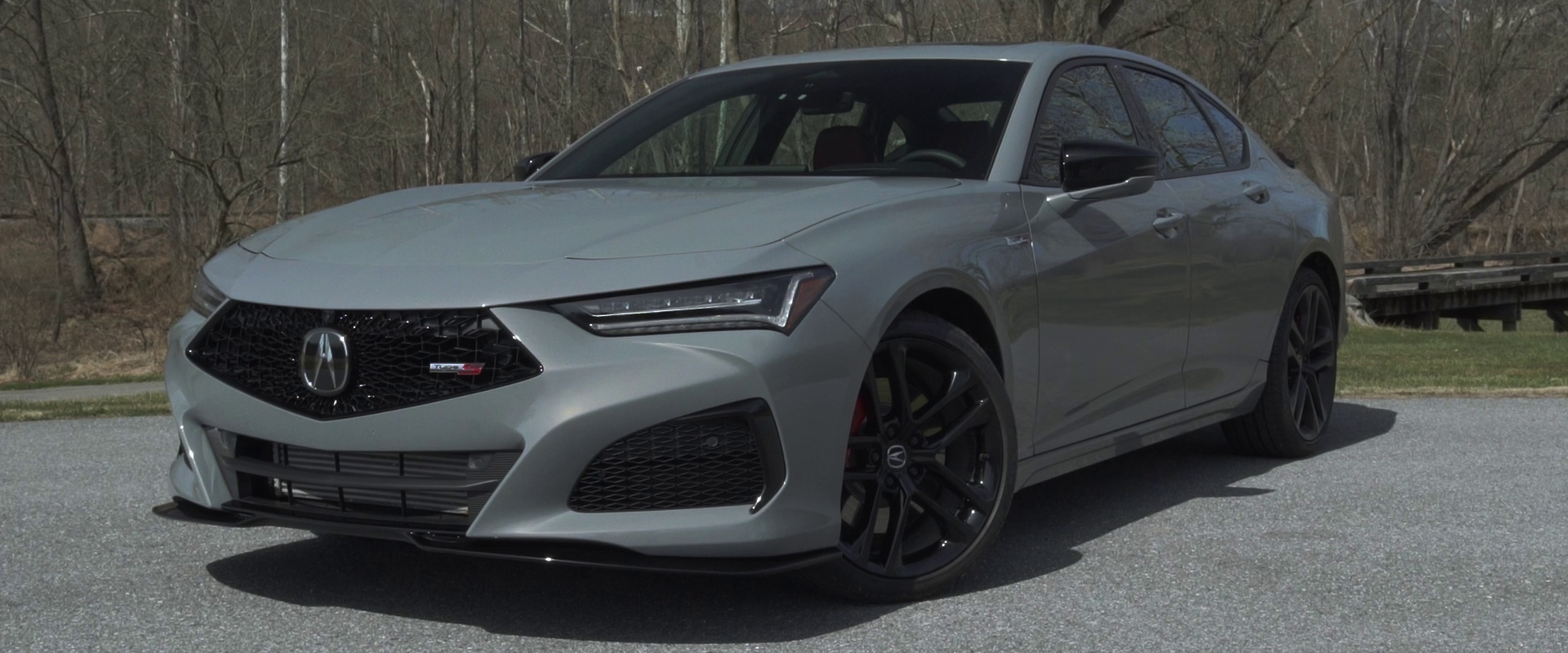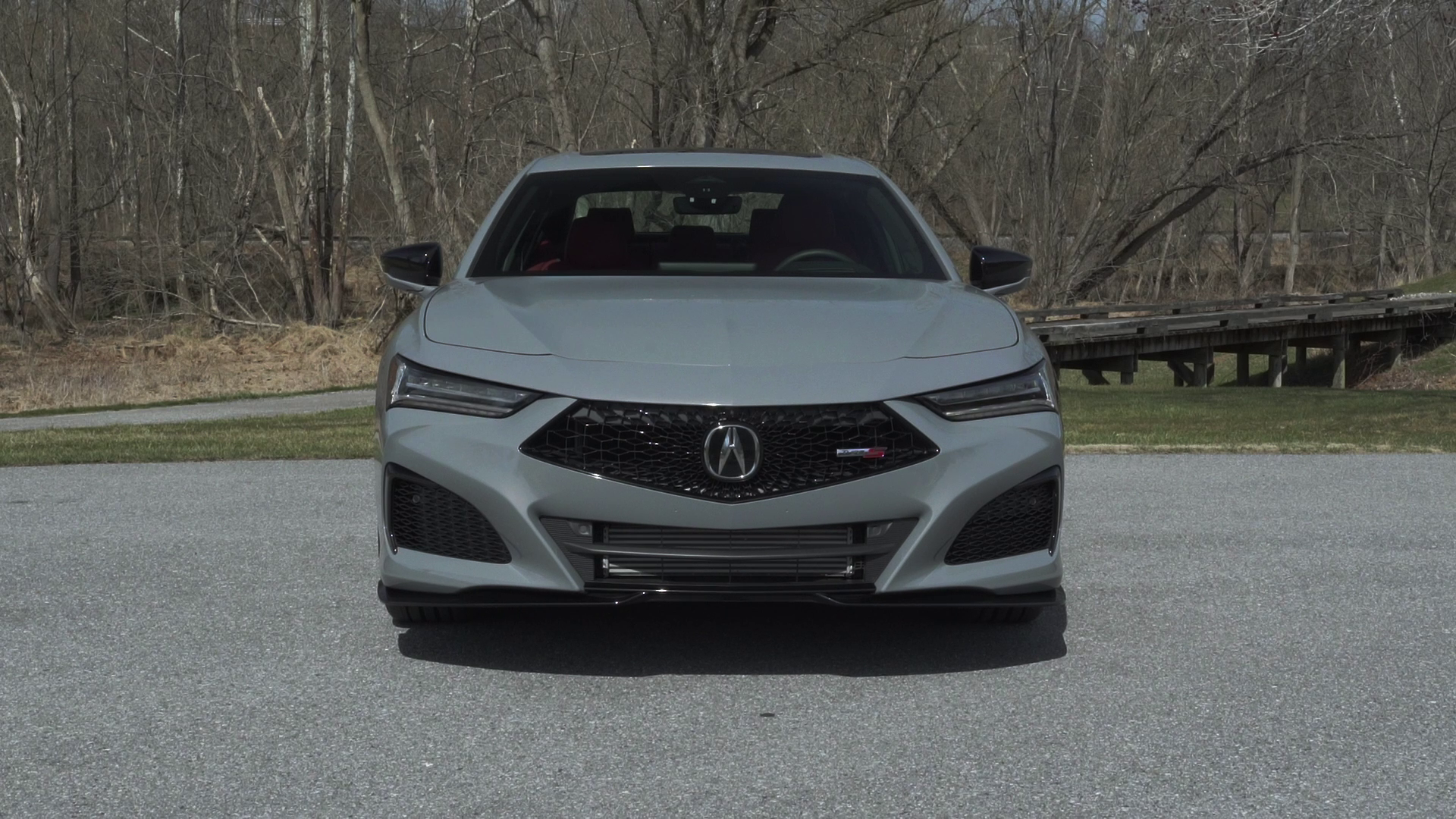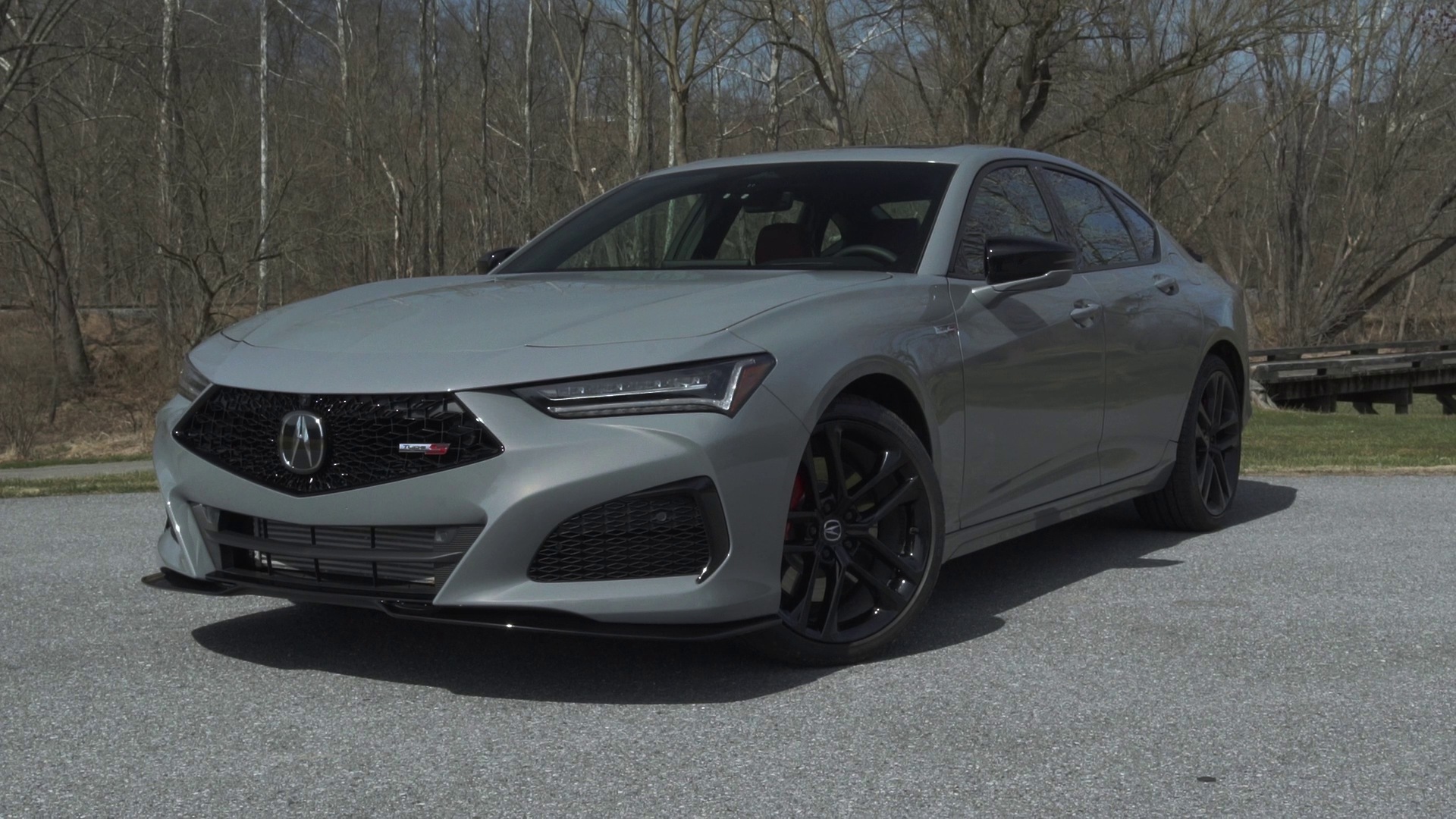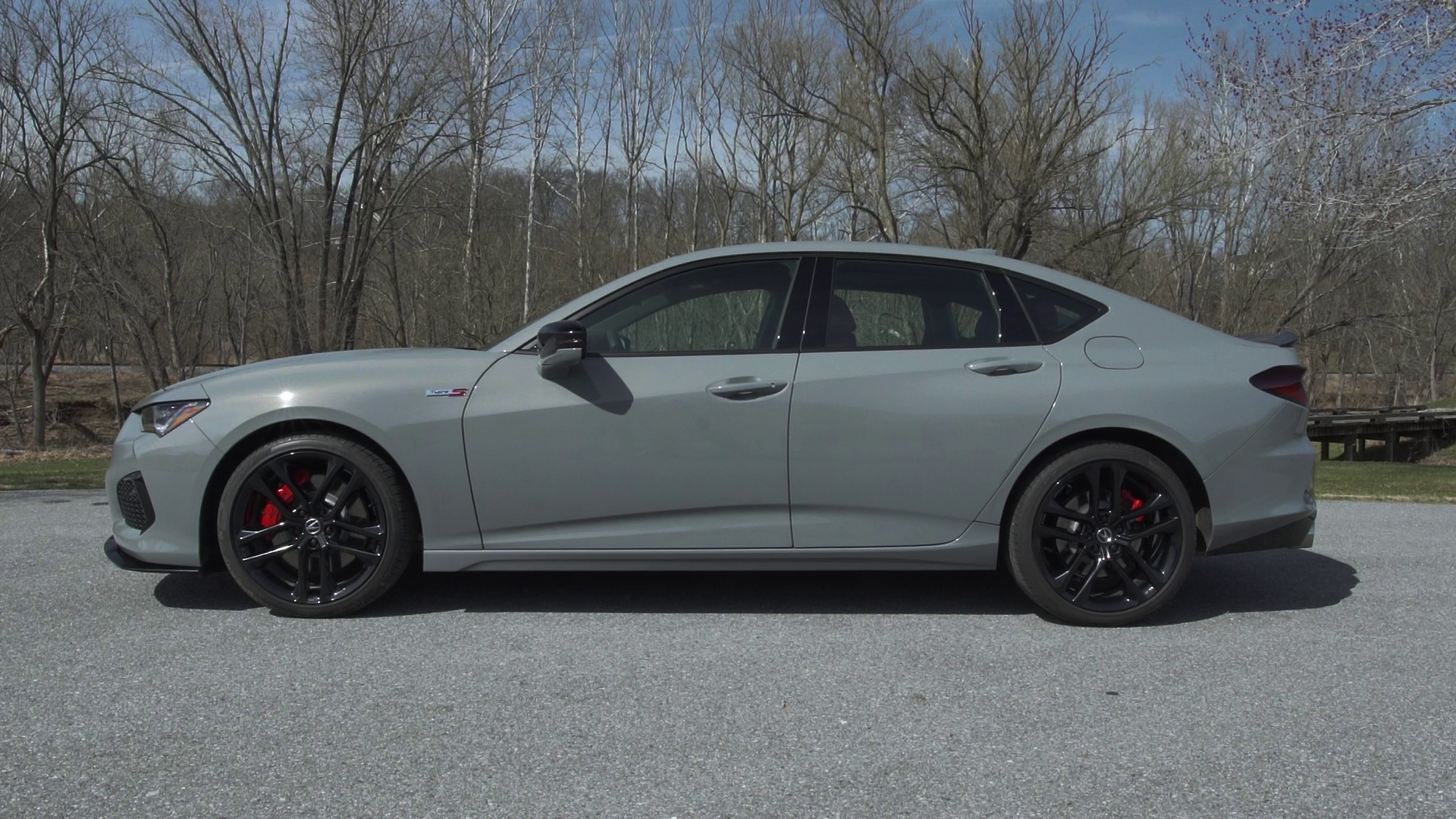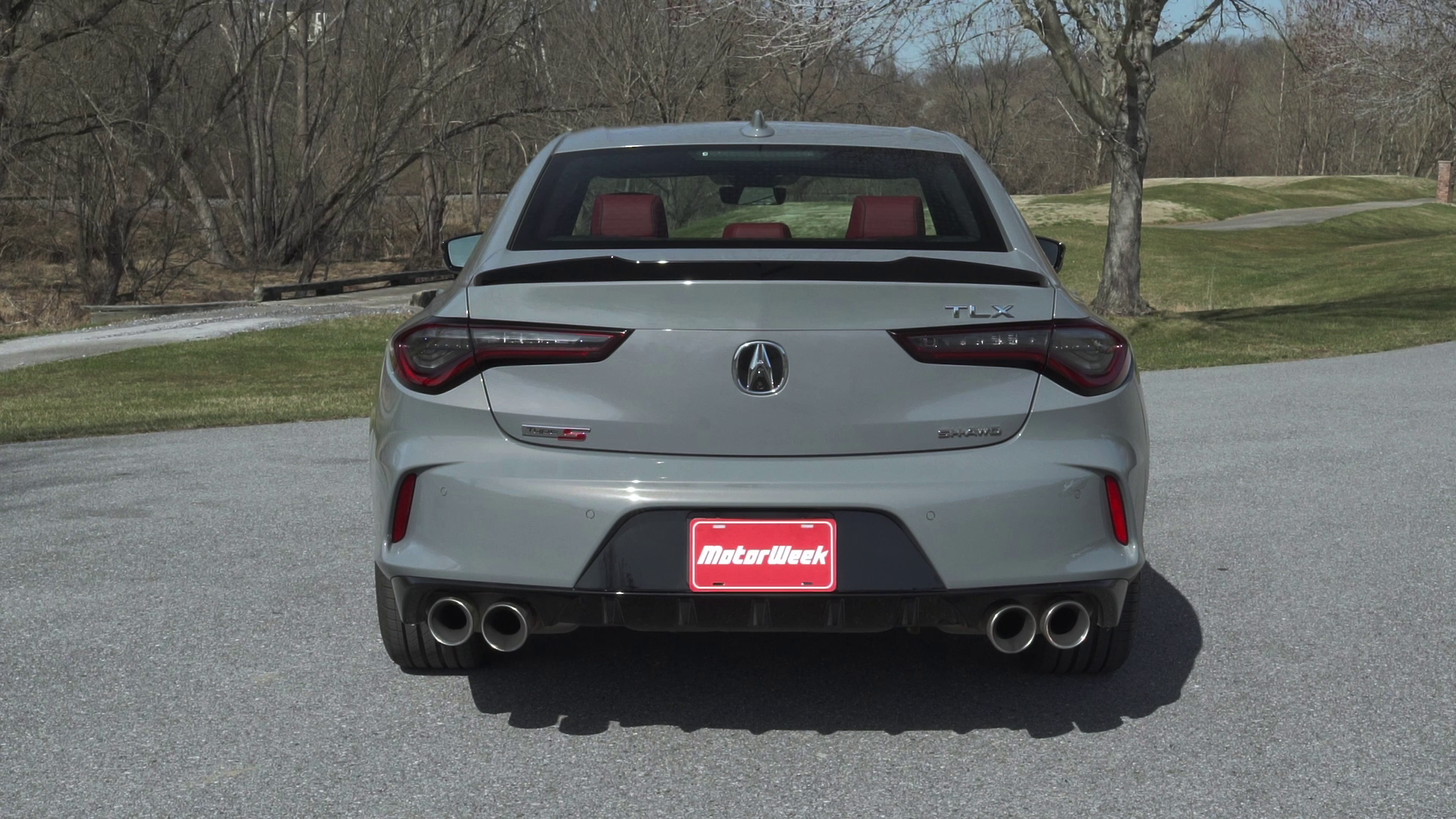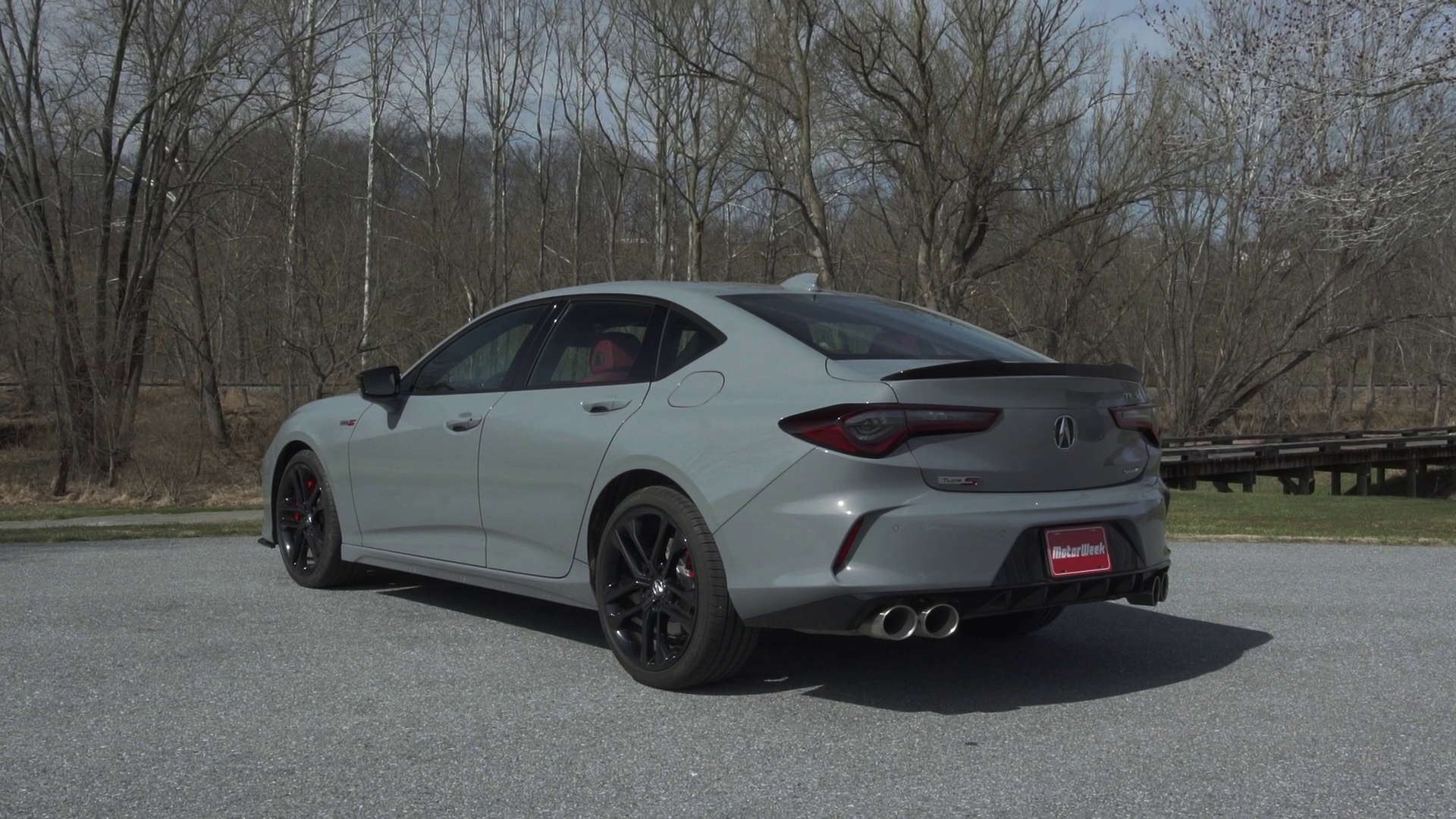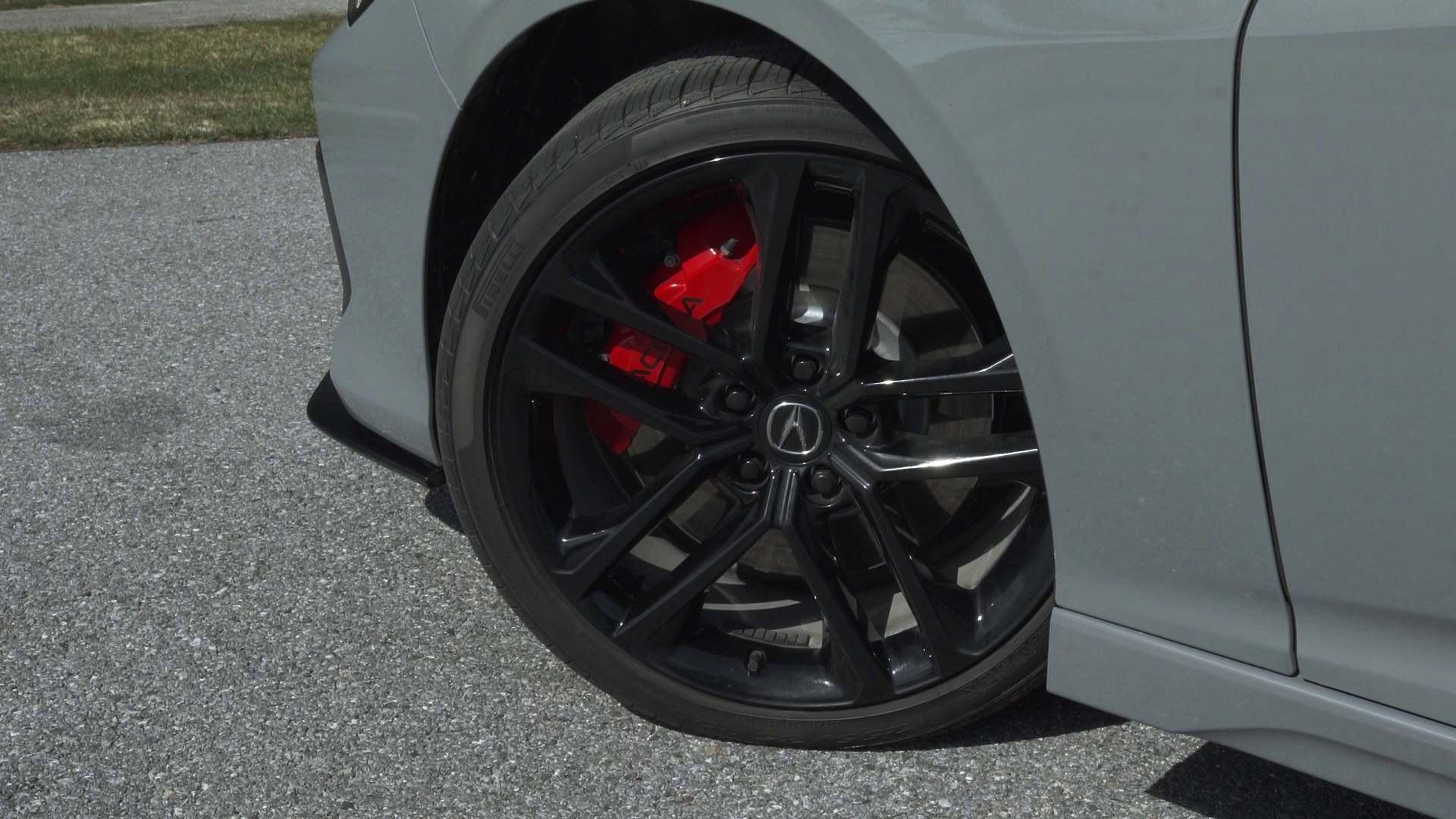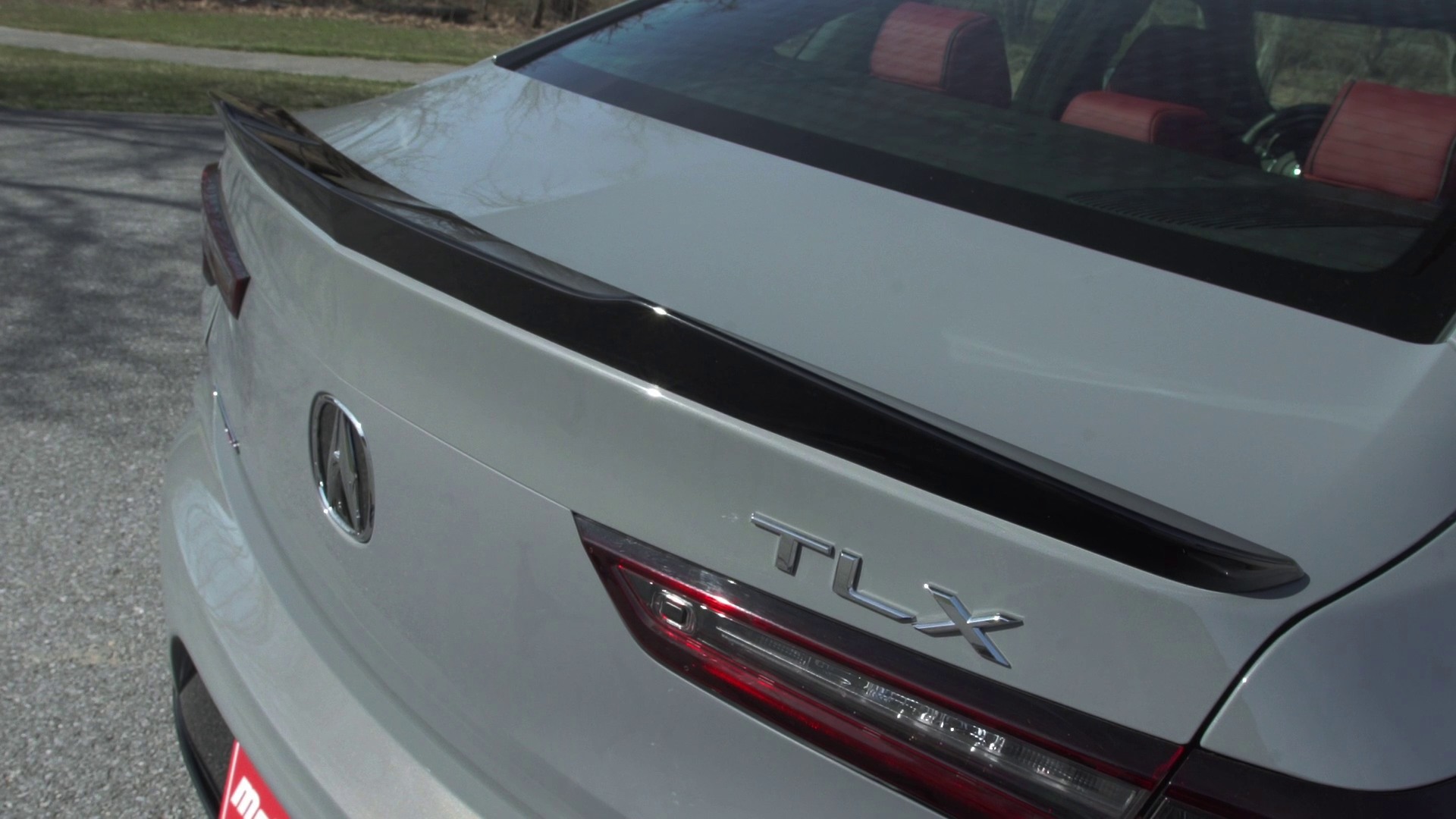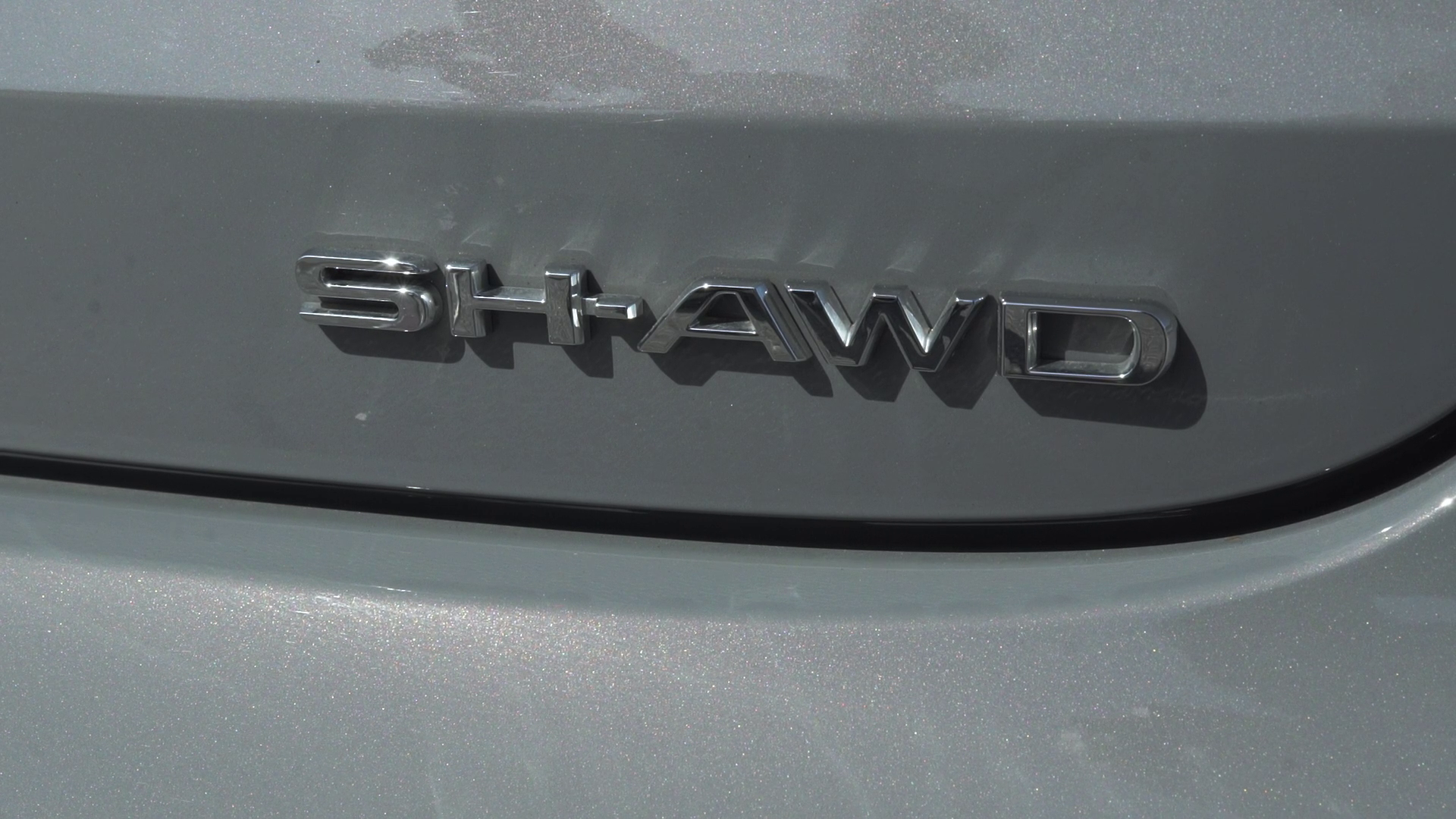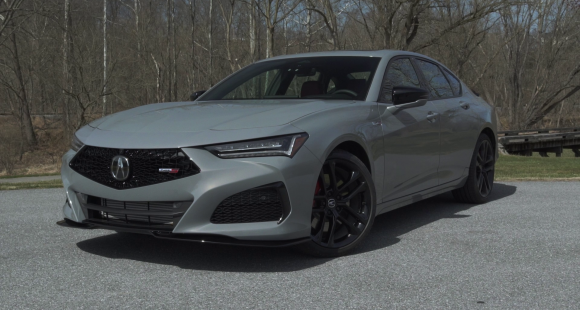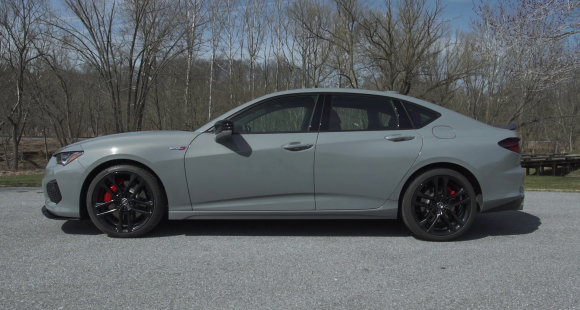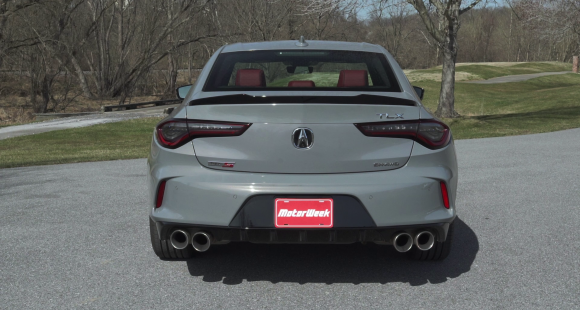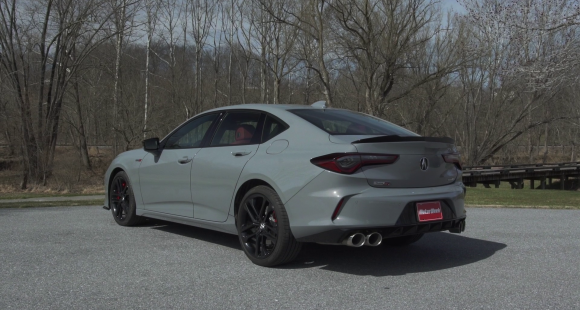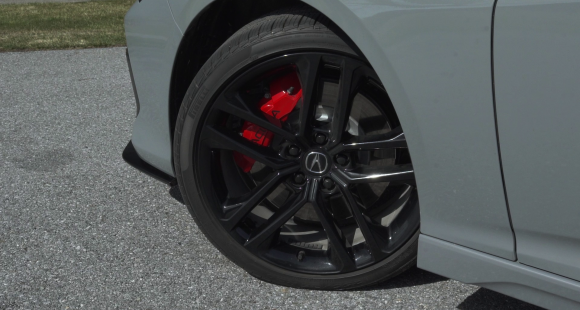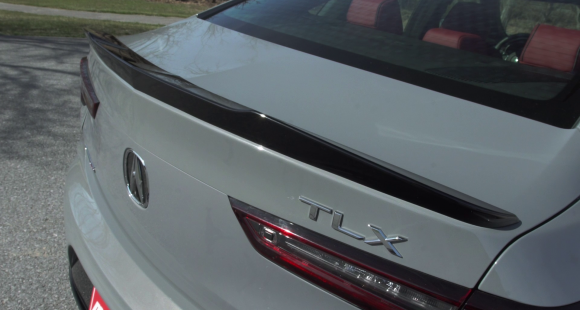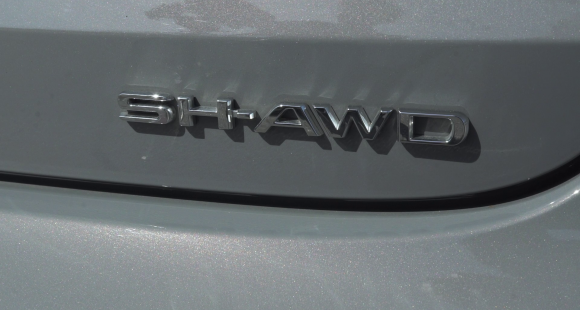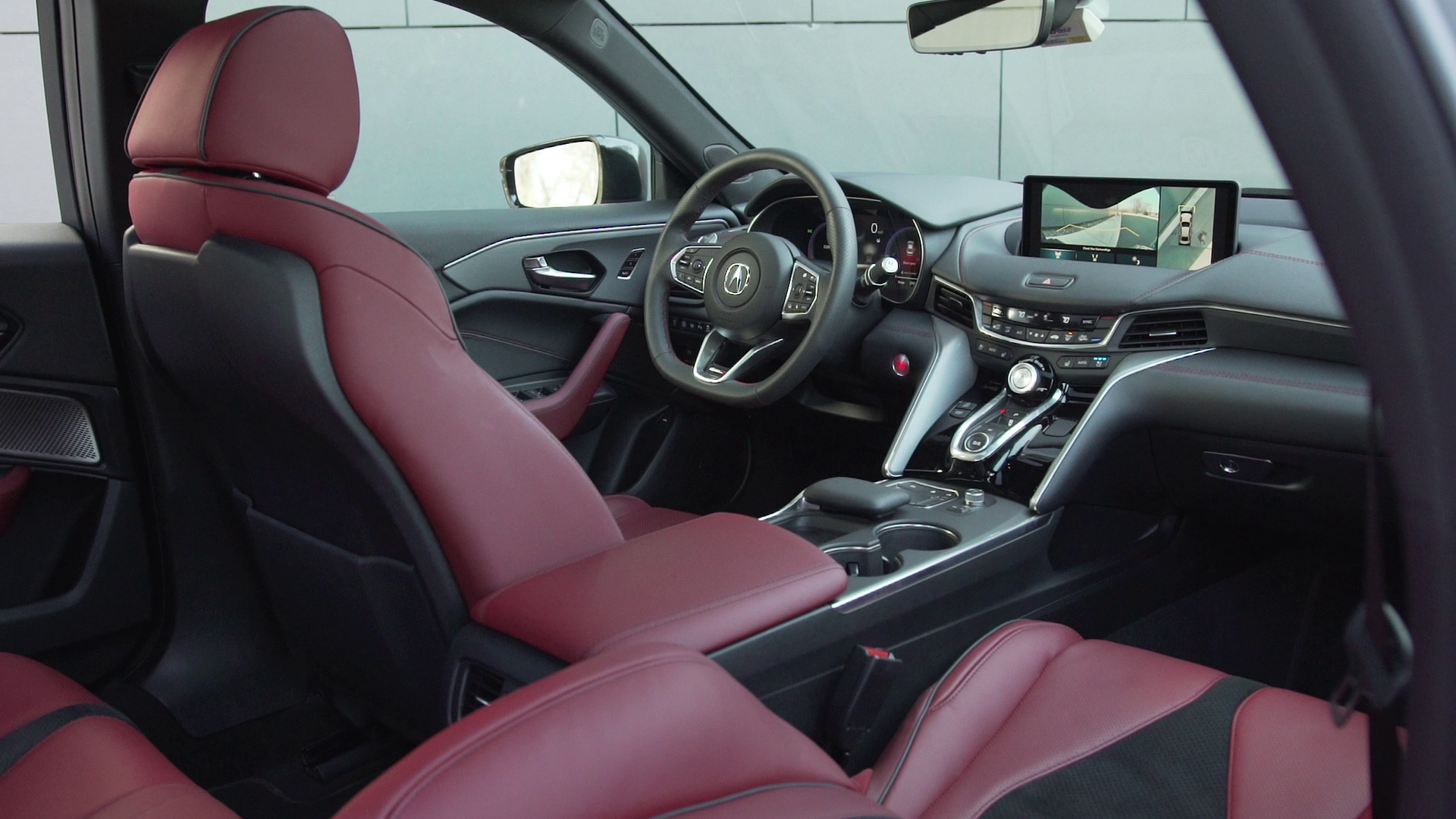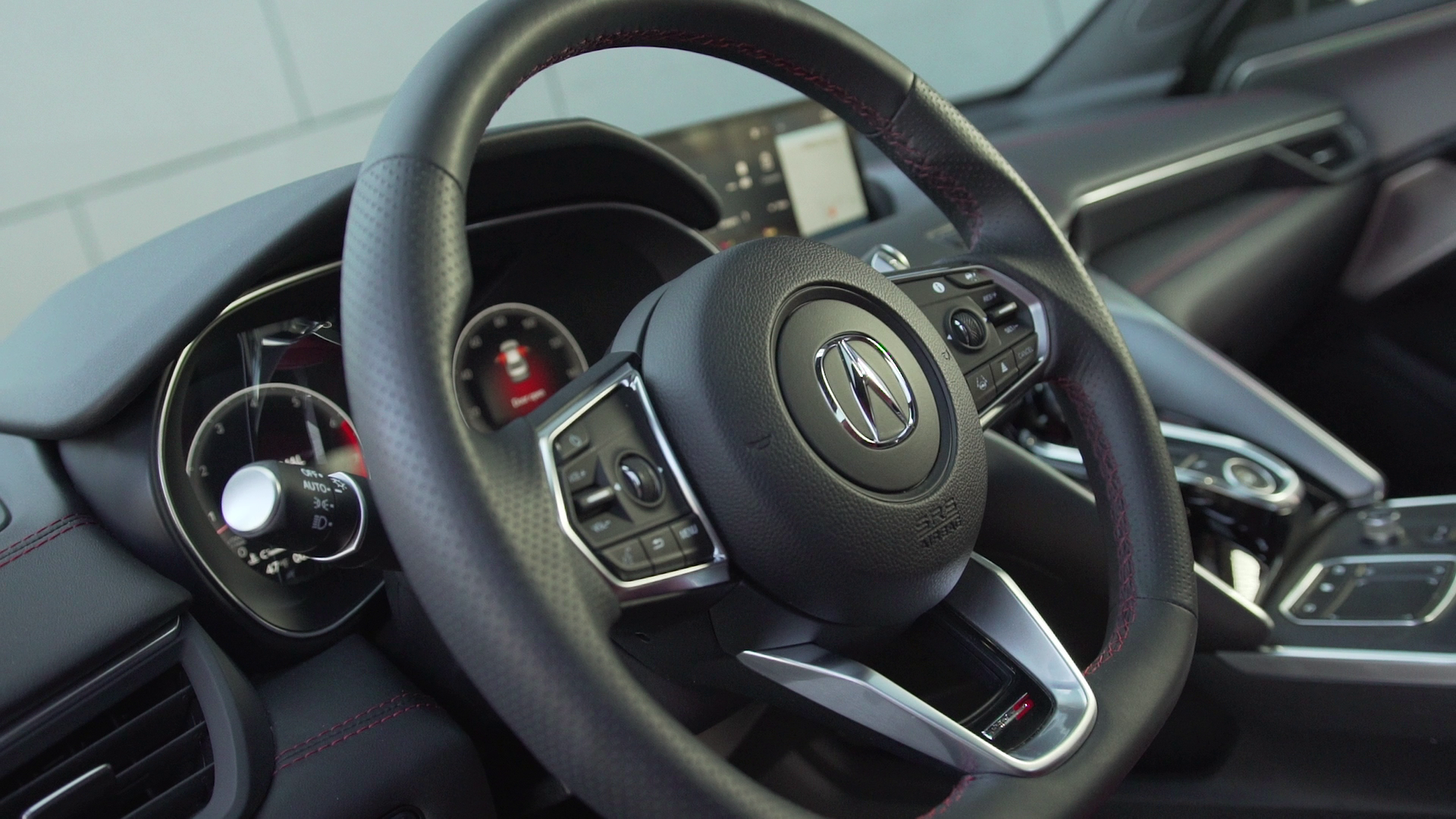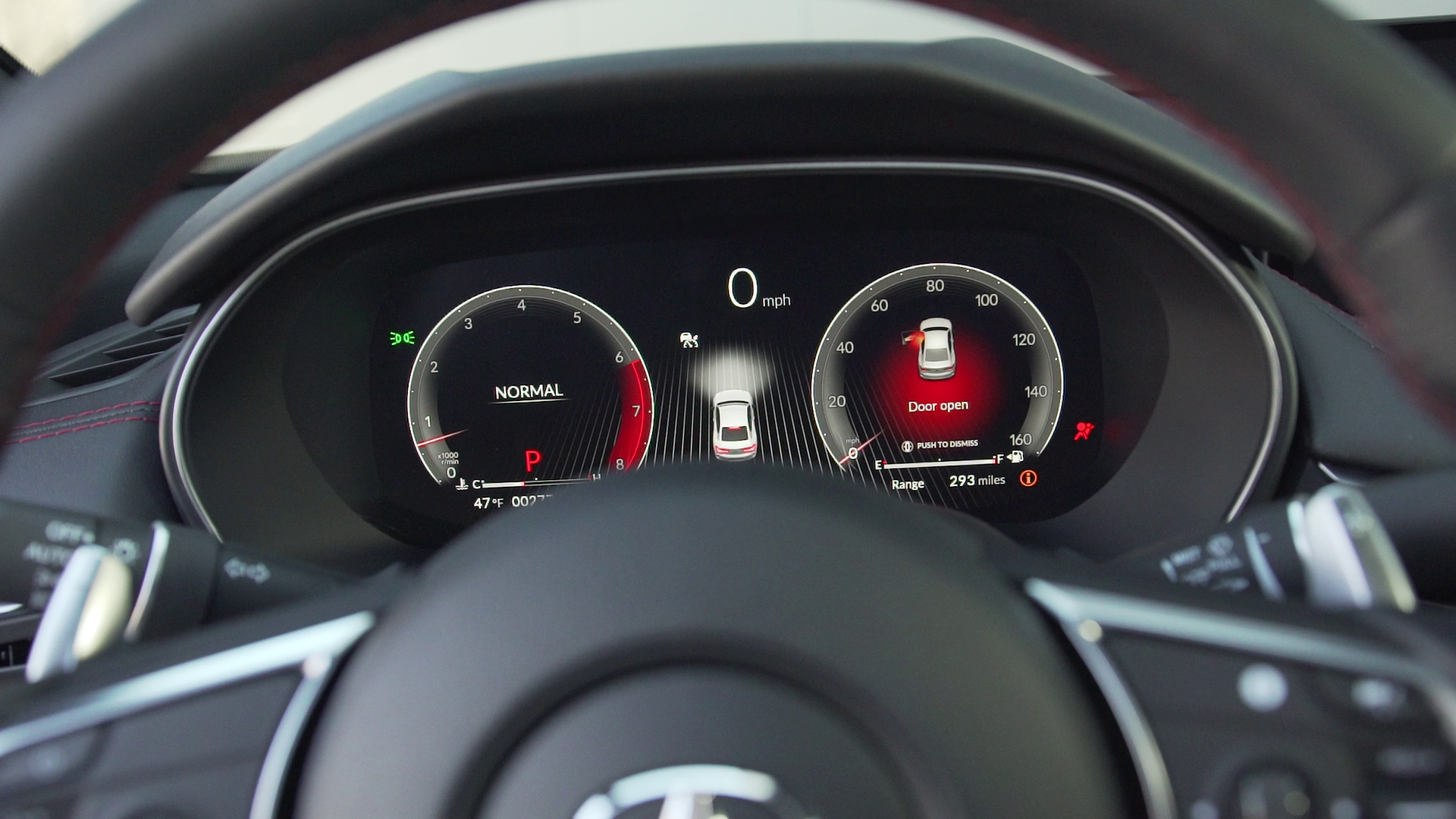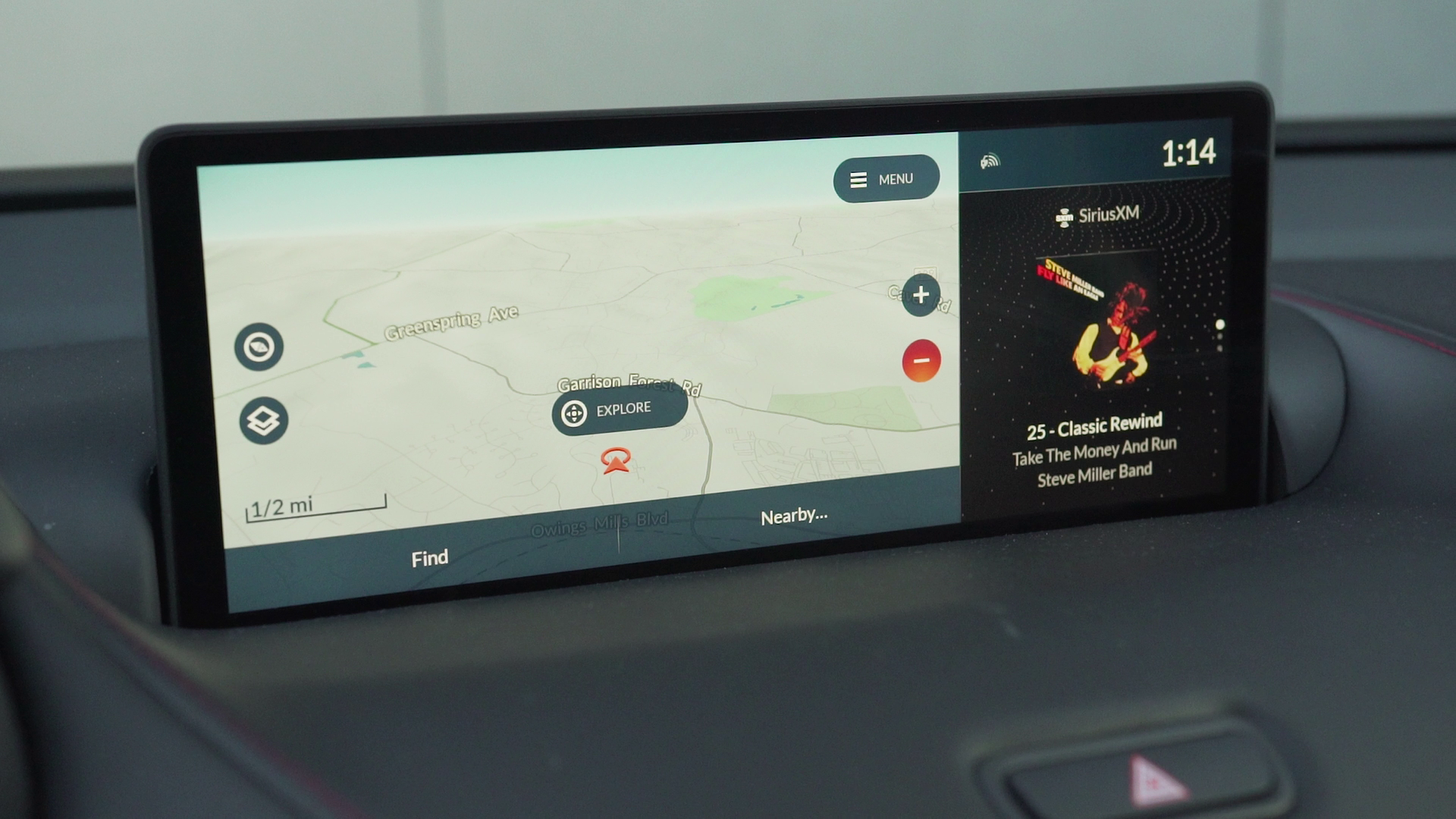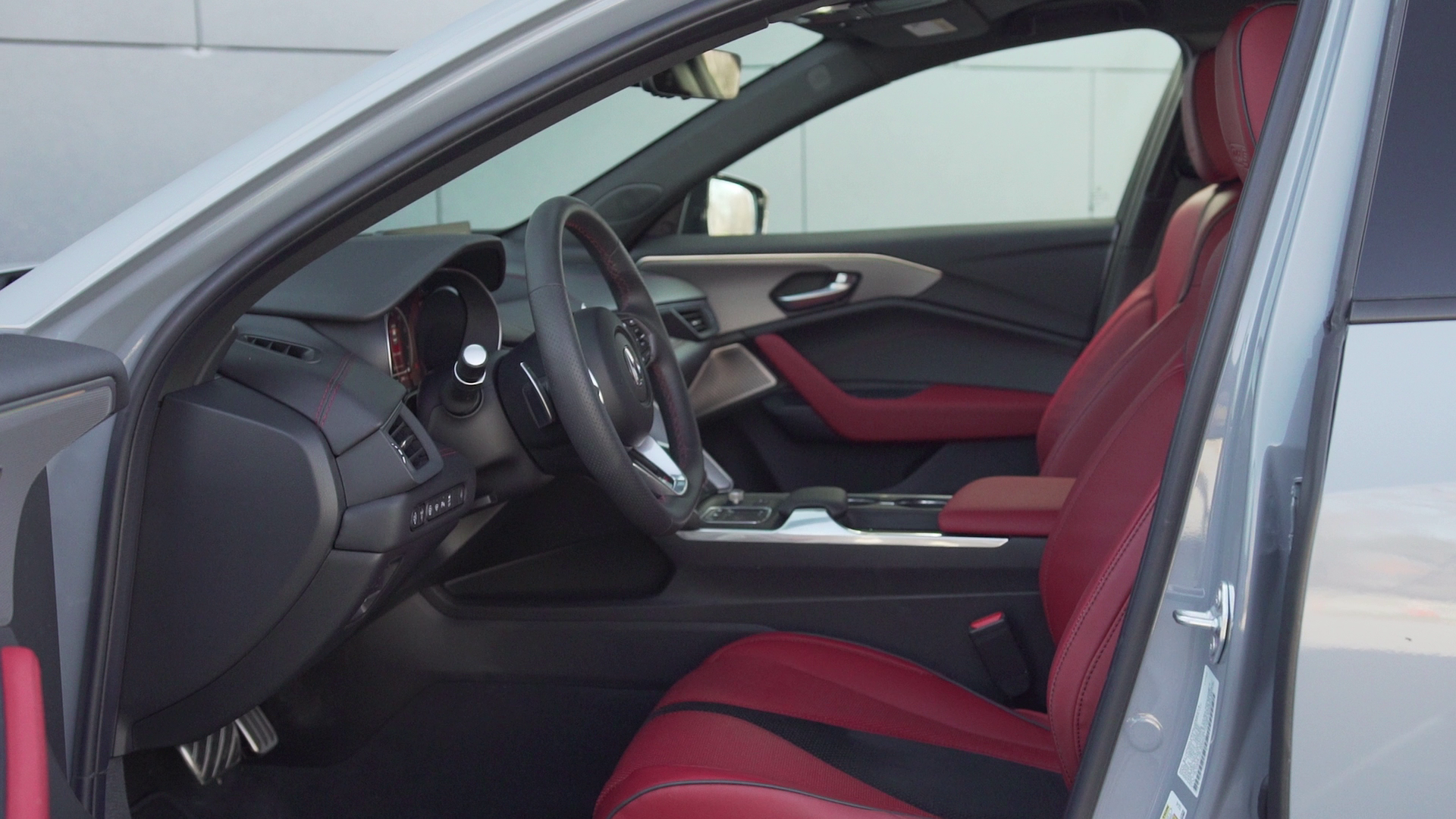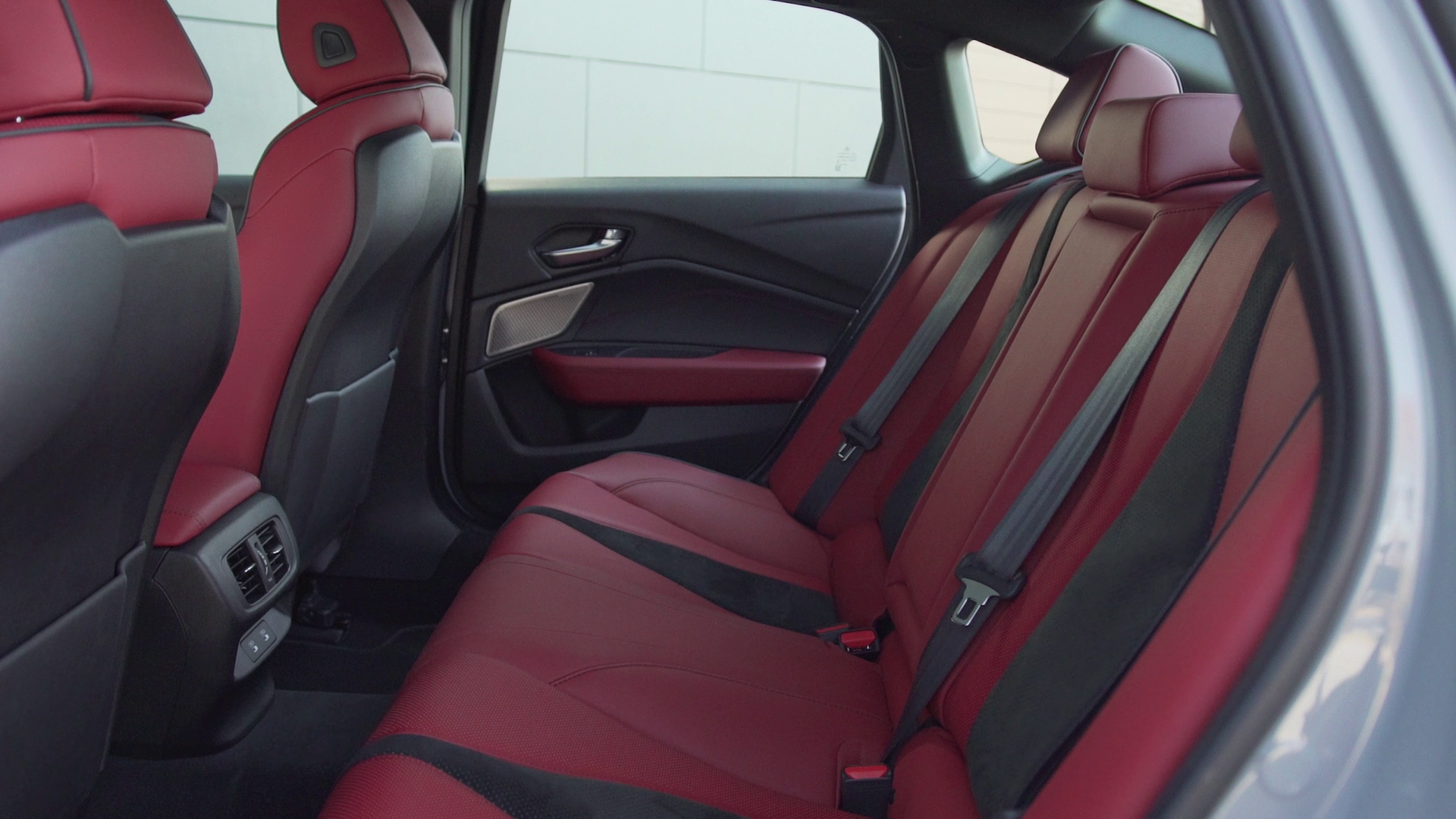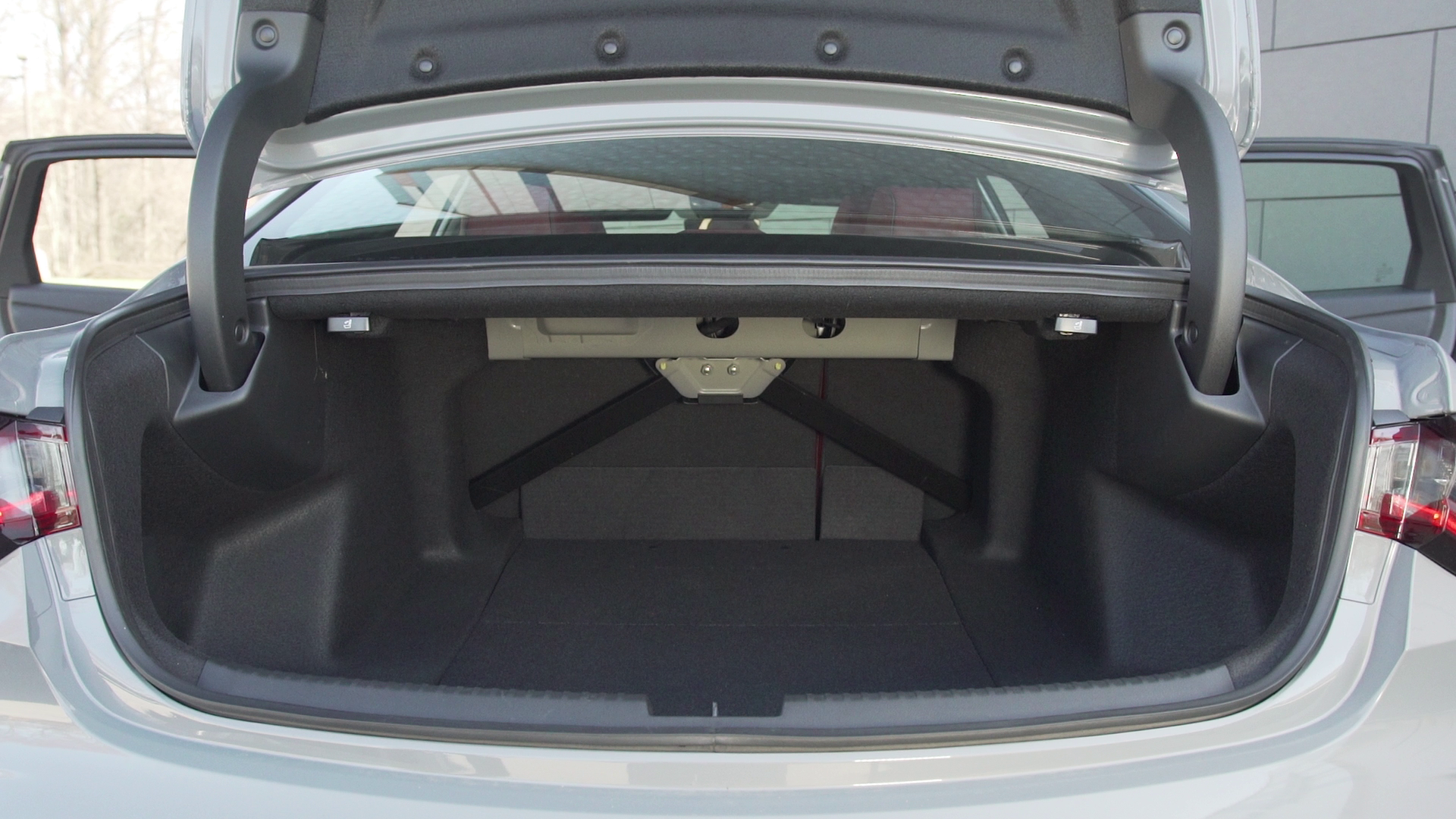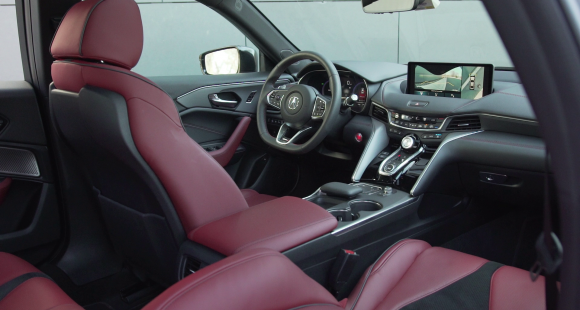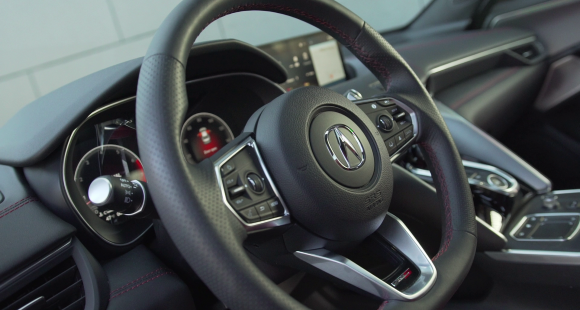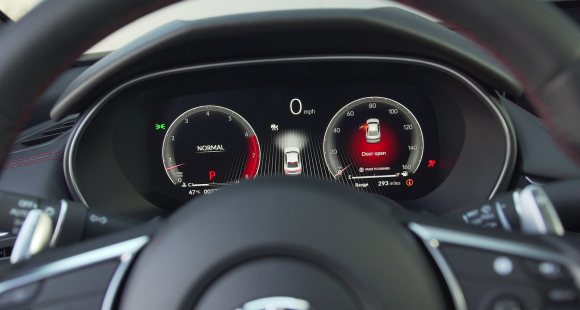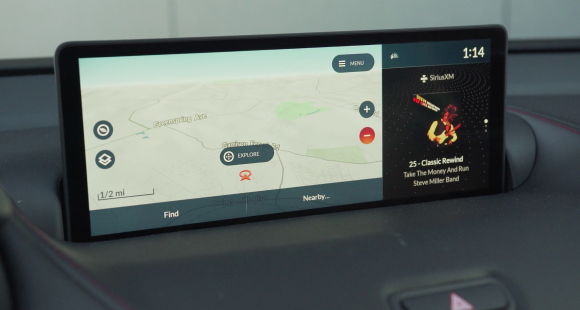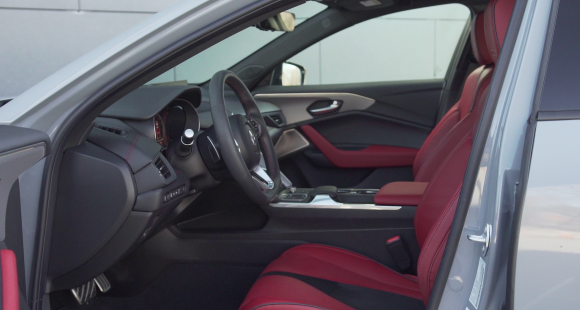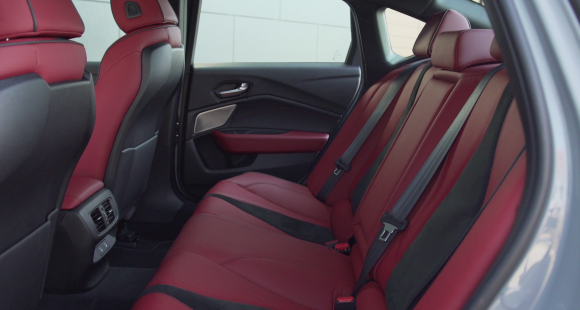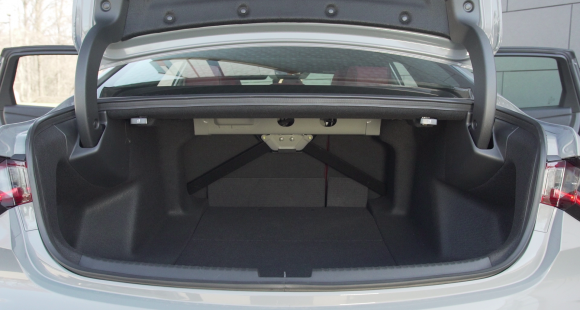2010 Hyundai Genesis Coupe
By now everyone that is into cars has heard the accolades heaped upon the Hyundai Genesis. We even picked this stylish sedan as our “best luxury car” of the year. But, is Genesis really a new beginning for a more upscale Hyundai? Well that’s where the new Genesis Coupe has to prove itself. So, let’s see if Genesis can evolve into a full carline, and not be just a one hit wonder.
It’s true that the Genesis Sedan and the new, 2010 Hyundai Genesis Coupe share the same nameplate, the same basic rear-wheel drive architecture, and a bit of overlap in powertrains. But beyond that, they struck us as two very different cars.
The plush four-door Sedan competes with the likes of the BMW 5-Series and Lexus GS. But, the two-door Coupe is more a Korean counter to Detroit’s muscle stalwarts, Camaro and Mustang, with an eye on the G37 Infiniti Coupe.
In terms of form, the Genesis Coupe takes on a truly low slung but aggressive look. Like the Tiburon before it, its proportions, racked stance, exaggerated haunches, and powerful curves, are right out of the contemporary Japanese sports car textbook.
Glaring Xenon HID headlamps spearhead the coupe’s short, bulldog snout, and its fast profile wears a flowing beltline contrasted by a jagged “Z” character lines.
18- or 19-inch alloys, a stubby rear deck, bright exhaust tips, and available spoiler, punctuate the performance look.
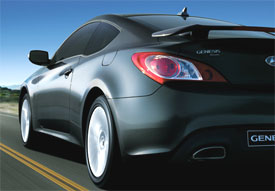 And to put substance to that look, the Genesis Coupe sports either a nicely exposed 2.0-liter turbocharged four, good for 210 horsepower and 223 pound-feet of torque; or the sedan’s 3.8-liter V6, with 306 horses and 266 pound feet of torque. There is no V8.
And to put substance to that look, the Genesis Coupe sports either a nicely exposed 2.0-liter turbocharged four, good for 210 horsepower and 223 pound-feet of torque; or the sedan’s 3.8-liter V6, with 306 horses and 266 pound feet of torque. There is no V8.
With 6-speed manuals standard, the I4 can be tied to a 5-speed automatic, while the V6 auto is a 6-speed. Both autos with steering wheel paddle shifters.
Flicking them for all their worth, our 3.8-liter V6 jumped sharply from 0 to 60 in 6.1 seconds and finished the 1/4 mile in 14.4 seconds at 100 miles per hour. Torque at launch was exceptional, building steadily with no dead spots. Gear changes were fairly quick and very smooth, though the steering wheel shifters felt cheap and hokey. Overall, however, the V6 Genesis Coupe is swift and entertaining in the straight line.
For turns, our Grand Touring Coupe has the standard sport-tuned suspension; braced MacPherson struts up front, and a five-link design in the rear. Electronic Stability and Traction Control come standard.
Through the cones, the coupe felt smaller and lighter than its 3400 pound weight would indicate. Grippy tires and a planted chassis give this car a ton of agility, and there’s virtually no body roll. The Coupe is quick to turn with just a mild touch of understeer. And when pushed hard, it remains both nimble and very well-balanced. Yes, it’s fun.
But, as to ride quality, our GT felt more sporty than premium. You know every bump in the road. Track models don even stiffer springs and shocks that might make it tiring as a daily driver.
All Coupes come with ABS disc brakes with Brake Assist 4-piston Brembos on Track models. With standard brakes, stops were straight, stable, and smooth, averaging a decent 130 feet from 60 to 0.
 Inside, the Genesis Coupe is also visibly a different venue than the Sedan. The stylishly cockpit says serious sport coupe. In fact the tight gauge cluster would be at home on many an exotic.
Inside, the Genesis Coupe is also visibly a different venue than the Sedan. The stylishly cockpit says serious sport coupe. In fact the tight gauge cluster would be at home on many an exotic.
But, materials and fit and finish, like in the Genesis Sedan, exceed even premium status. Mid-level Grand Touring trim includes leather on the well bolstered bucket seats, with heat and power adjust for the driver.
The three-spoke steering wheel makes for a nice grip, with controls for audio and cruise. There is also a standard information display, hands free Bluetooth, and an IPod interface, and to pump out those tunes, there’s an Infinity 10-speaker audio system.
The two-passenger rear seating area is relatively easy to access, and offers ample legroom. But the car’s plunging roof line takes headroom down to child size.
Best to fold the seat down to expand the small 10 cubic foot trunk. The trunk opening is also small, and very non-premium u-shaped hinges may give your luggage a crushing blow.
Government Fuel Economy ratings for our V6 automatic Coupe are 17 city/27 highway on Regular gas. We achieved 23.1 in real-world driving and were pretty pleased with it. The 2.0T does about 10% better.
The V6 Energy Impact Score is 16.3 barrels of oil per year, with a Carbon Footprint of 8.7 tons of CO2.
Staying true to Hyundai’s formula for affordability, prices are also closer to Camaro than G37. The 2.0T starts at $22,750, while the 3.8 starts at $25,750. Still, uplevel trims and options will easily take the coupe over the $30,000 mark. But, with such a spread, and great powertrain warranty, the Genesis Coupe should appeal to a much wider demographic than the Sedan.
So that’s the 2010 Hyundai Genesis Coupe. But, rather than adding to the prestige of the Genesis carline, it comes off as more of a mainstream Hyundai. Now, that doesn’t mean it’s not a terrific effort. It truly is, and more proof that Hyundai has evolved into a brand that no rival, import or domestic, can take for granted.
Specifications
- Engine: 3.8-Liter V6
- Horsepower: 306
- Torque: 266 Lb Feet
- 0-60 MPH: 6.1 Seconds
- 1/4 Mile: 14.4 Seconds @ 100 MPH
- 60-0 MPH: 130 Feet
- EPA: 17 MPG City/ 27 MPG Highway
- Mixed Loop: 23.1 MPG
- Energy Impact: 16.3 Barrels Oil/Yr
- CO2 Emissions: 8.7 Tons/Yr
2024 Acura TLX Type S
A Grown-Up Sport Sedan Looking To Do Boy Racer Things
While the recent and highly successful relaunch of the Acura Integra has been hogging most of the brand’s headlines, the Integra is not the only sporty car that Acura builds. In fact, it’s the all-wheel-drive TLX Type S that remains Acura’s quickest and best handling sport sedan. Add in numerous updates for 2024 and it clearly demands our attention once again.
We are indeed looking closer at this updated 2024 Acura TLX Type S sport sedan and noticing quite a few changes. For starters, it’s one very aggressive looking four-door. Most of that due to the Type S upgrades which include a front splitter, rear spoiler and diffuser, big quad exhaust tips, Brembo brakes, and 20-inch wheels, though all TLXs get updated front fascias and grillwork for ’24.
Inside the tech-heavy interior, things look and feel great with upscale materials and fine stitching. A new 12-inch Precision Cockpit Digital Instrument cluster, ELS Premium Audio, wireless phone charging, and ambient lighting are now standard on all TLXs.
The upgraded infotainment screen grows from 10- to 12-inches and features faster processing, though after spending a year with an Integra and its touchscreen, having to use the touchpad interface here in the TLX is a clear step back in terms of functionality. Updates specific to the Type S include a surround view camera and a 10.5-inch Head Up Display. And there’s no taking a back seat to luxury in the back seat of the TLX; plenty of comfort and space for adults, plus some new charging ports.
A 272-horsepower 2.0-liter I4 turbo comes in the standard TLX, but thankfully the Type S’s fire-breathing 3.0-liter turbo V6 is still under the hood here, putting out 355 horsepower and 354 lb-ft of torque. No changes for either engine, but we’ll take that as a great thing these days. And there may not be any additional power, but there is sharper throttle response in Sport+ mode than before, so it will give you the impression that you’re working with a little more. Transmission remains a 10-speed automatic with paddle shifters on the steering wheel. Super-Handling All-Wheel-Drive is standard with the Type S and A-Spec, only the base TLX remains front-wheel-drive only.
Spring maintenance was still in progress at our test track and things weren’t quite fully prepped for the season just yet, so the Type S’s all-wheel-drive traction was much appreciated; as it allowed us to pounce off the line and rip to 60 in just 5.0 seconds flat, a tenth quicker than the last Type S we tested in ’21. It ripped through first and second gears quickly, before settling down a bit as it worked its way to the end of the quarter-mile in 13.5 seconds at 104 mph.
And there may not be any additional power, but there is sharper throttle response in Sport+ mode than before, so it will give you the impression that you’re working with a little more.
While far from a noisy car, Acura has installed some thicker carpet to quell what little road noise was apparently seeping in. Thankfully, they didn’t do anything to dampen engine or exhaust noises, as they sound fantastic.
This TLX scooted through our cone course quite efficiently, behaving as if on the proverbial set of rails. Type S tuning includes additional bracing for the chassis, plus firmer settings for the adaptive dampers that are part of the double-wishbone front and multi-link rear suspension.
Acura’s SH-AWD has been torque-vectoring power between all four wheels since long before that was commonplace; and its technical heavy-handedness is evident, as while it was slicing through the exercise with precision, it wasn’t always obvious how it was all happening. The Brembo brakes felt great, and were fade-free, but at 125 feet from 60 mph, stops were closer to family sedan territory than the typical sport sedan.
But there’s no skimping on active safety here, with full Acura Watch features including Lane Keeping Assist, Collision Mitigation Braking, Road Departure Mitigation, and Advanced Pedestrian Detection standard on all TLXs.
Government Fuel Economy Ratings are 19-City, 25-Highway, and 21-Combined; we averaged a good 23.6 mpg of Premium. That’s a slightly below average Energy Impact Score; using 14.2-barrels of oil yearly, while emitting 6.9-tons of CO2.
A simplified pricing structure now leaves you with three TLX choices, Technology, A-Spec, and Type S; things start at $46,195; this Type S will set you back $58,195.
Is it worth it? Well, it all depends on what your priorities are. If you’re looking for a super comfy luxury commuter, then probably not. But, if you’re looking for a superior driver’s car, with the most performance you can get in an Acura sedan, and plan on putting it to good use, then the 2024 Acura TLX Type S is absolutely worth it.
Specifications
- Engine: 3.0-liter turbo V6
- Horsepower: 355
- 0-60 mph: 5.0 seconds
- 60-0 Braking: 125 feet (avg)
- MW Fuel Economy: 23.6 mpg (Premium)
- Transmission: 10-speed automatic
- Torque: 354 lb-ft.
- 1/4 Mile: 13.5 seconds at 104 mph
- EPA: 19 City | 25 Highway | 21 Combined







